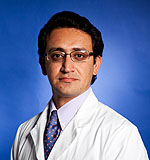Leading Authority Recommends Annual Screening Of Scleroderma Patients For Pulmonary Hypertension
Written by |

Scleroderma patients should be screened every year for pulmonary hypertension, even if they are recently diagnosed and have no respiratory symptoms, according to one of the foremost research authorities on the disease. Scleroderma, or systemic sclerosis, is a chronic connective tissue disease generally classified as one of the autoimmune rheumatic diseases. The word scleroderma comes from two Greek words: sclero meaning hard, and derma meaning skin. Hardening of the skin is one of the most visible manifestations of the disease. According to the Scleroderma Foundation, an estimated roughly 300,000 Americans have scleroderma — about one third of those people having the systemic form of the disease. Since scleroderma presents with symptoms similar to other autoimmune diseases, diagnosis is difficult. There may be many misdiagnosed or undiagnosed cases.
The Pulmonary Hypertension Association (PHA) defines that disease as high blood pressure in the lungs. As opposed to regular hypertension (also popularly referred to as “high blood pressure”) in which arteries throughout the body are constricted, Pulmonary Hypertension (PH) affects only the blood vessels in the lungs and the right side of the heart. The condition worsens over time and becomes life-threatening when the pressure in the pulmonary arteries rises high enough to put a strain on the heart.
Pulmonary Hypertension (PH) is actually a general term used to describe high blood pressure in the lungs from any cause, while Pulmonary Arterial Hypertension (PAH) is a chronic and currently incurable disease that causes arterial walls in the lungs to tighten and stiffen. In persons with PAH, the right side of the heart is required to work harder in order to pump blood through narrowed arteries in the lungs. Eventually, the extra stress causes the heart to enlarge and become less flexible, compromising its ability to push blood out of the heart, through the lungs, and into the rest of the body. Unfortunately, diagnosis of PAH, which estimated to affect 15 to 20 thousand people in the United States, predominantly middle-aged women, is also frequently delayed due to the nonspecific nature of symptoms.
 However, noninvasive tests can catch pulmonary problems early, and treatments are available to slow the progression of scleroderma, says Dr. Dinesh Khanna, director of the University of Michigan’s Scleroderma Program in Ann Arbor, who discussed how to perform scleroderma screening at the Global Academy for Medical Education – 7th Annual Perspectives in Rheumatic Diseases convention held Sep 09, 2014 – Sep 10, 2014 at the MGM Grand Hotel and Casino in Las Vegas. Dr. Khanna summarizes his observations in a video posted by M. Alexander Otto of the Skin & Allergy News Digital Network.
However, noninvasive tests can catch pulmonary problems early, and treatments are available to slow the progression of scleroderma, says Dr. Dinesh Khanna, director of the University of Michigan’s Scleroderma Program in Ann Arbor, who discussed how to perform scleroderma screening at the Global Academy for Medical Education – 7th Annual Perspectives in Rheumatic Diseases convention held Sep 09, 2014 – Sep 10, 2014 at the MGM Grand Hotel and Casino in Las Vegas. Dr. Khanna summarizes his observations in a video posted by M. Alexander Otto of the Skin & Allergy News Digital Network.
Dr Khanna is also lead author of an Open Access study published last fall by the American College of Rheumatology journal Arthritis & Rheumatology entitled “Recommendations for Screening and Detection of Connective Tissue DiseaseAssociated Pulmonary Arterial Hypertension” (first published online: 27 NOV 2013 Arthritis & Rheumatism Volume 65, Issue 12, pages 31943201, December 2013 DOI: 10.1002/art.38172). The paper is coauthored by a multinational and multi-institutional team of researchers: Heather Gladue, Scott Visovatti, Nezam Altorok, Whitney Townsend, and Vallerie V. McLaughlin of the University of Michigan, Ann Arbor; Richard Channick of the Massachusetts General Hospital, Boston; Lorinda Chung of the Stanford University School of Medicine, Stanford, and the Palo Alto VA Health Care System, Palo Alto, California; Oliver Distler of the University Hospital Zurich, Zurich, Switzerland; Daniel E. Furst and John FitzGerald of the David Geffen School of Medicine at University of California, Los Angeles; Eric Hachulla of the Université Lille and Hospital Claude Huriez, Lille, France; Marc Humbert of the Université Paris-Sud and Hospital Bictre, Le Kremlin-Bictre, France; Stephen C. Mathai of the Jewish General Hospital and McGill University, Montreal, Canada, and the Johns Hopkins University School of Medicine, Baltimore, Maryland; and Rajeev Saggar of St. Joseph’s Hospital and Medical Center, Phoenix, Arizona
The coauthors note that pulmonary arterial hypertension affects up to 15% of patients with connective tissue diseases (CTDs), but that previous recommendations developed as part of larger efforts in PAH did not include detailed recommendations for patients with CTD-associated PAH. Consequently, the researchers sought to develop recommendations for screening and early detection of CTD-associated PAH.
They performed a systematic review of the literature on the screening and diagnosis of PAH in CTD, and using the RAND/University of California, Los Angeles consensus methodology, they developed case scenarios followed by two stages of voting. First, international experts from a variety of specialties voted anonymously on the appropriateness of each case scenario. The experts then met face-to-face to discuss and resolve discrepant votes to arrive at consensus recommendations.
The researchers’ key recommendation stated that all patients with systemic sclerosis (SSc) should be screened for PAH. In addition, patients with mixed connective tissue disease or other CTDs with scleroderma features (scleroderma spectrum disorders) should be screened for PAH. It was recommended that screening pulmonary function tests (PFTs) with single-breath diffusing capacity for carbon monoxide, transthoracic echocardiogram, and measurement of N-terminal probrain natriuretic peptide (NT-proBNP) be performed in all patients with SSc and scleroderma spectrum disorders. In patients with SSc and scleroderma spectrum disorders, transthoracic echocardiogram and PFTs should be performed annually. The full screening panel (transthoracic echocardiogram, PFTs, and measurement of NT-proBNP) should be performed as soon as any new signs or symptoms are present.
The coauthors provide consensus-based, evidence-driven recommendations for screening and early detection of CTD-associated PAH, and affirm that it is their hope that these recommendations will lead to earlier detection of CTD-associated PAH and ultimately improve patient outcomes.
 In the video, Dr. Khanna also references a study published last year in the journal Annals of the Rheumatic Diseases entitled “Evidence-based detection of pulmonary arterial hypertension in systemic sclerosis: the DETECT study” (Ann Rheum Dis. 2014 Jul;73(7):1340-9. doi: 10.1136/annrheumdis-2013-203301. Epub 2013 May 18), led by Dr. J. Gerry Coghlan MD FRCP of the Cardiology Department at the Royal Free Hospital, London, UK, coauthored by another international research team of the DETECT study group.
In the video, Dr. Khanna also references a study published last year in the journal Annals of the Rheumatic Diseases entitled “Evidence-based detection of pulmonary arterial hypertension in systemic sclerosis: the DETECT study” (Ann Rheum Dis. 2014 Jul;73(7):1340-9. doi: 10.1136/annrheumdis-2013-203301. Epub 2013 May 18), led by Dr. J. Gerry Coghlan MD FRCP of the Cardiology Department at the Royal Free Hospital, London, UK, coauthored by another international research team of the DETECT study group.
That study also observes that earlier detection of PAH, which the coauthors note is a leading cause of death in systemic sclerosis (SSc), facilitates earlier treatment. The objective of their study was to develop the first evidence-based detection algorithm for PAH in SSc.
The cross-sectional, international study was conducted in 62 experienced centres from North America, Europe and Asia. Adults with SSc at increased risk of PAH (SSc for >3 years and predicted pulmonary diffusing capacity for carbon monoxide <60%) underwent a broad panel of non-invasive assessments followed by diagnostic right heart catheterization (RHC). Univariable and multivariable analyses selected the best discriminatory variables for identifying PAH. After assessment for clinical plausibility and feasibility, these were incorporated into a two-step, internally validated detection algorithm. Nomograms for clinical practice use were developed.
The coauthors report that of 466 SSc patients at increased risk of PAH, 87 (19%) had RHC-confirmed PAH. PAH was mild (64% in WHO functional class I/II). Six simple assessments in Step 1 of the algorithm determined referral to echocardiography. In Step 2, the Step 1 prediction score and two echocardiographic variables determined referral to RHC. The DETECT algorithm recommended RHC in 62% of patients (referral rate) and missed 4% of PAH patients (false negatives). By comparison, applying European Society of Cardiology/European Respiratory Society guidelines to these patients, 29% of diagnoses were missed while requiring an RHC referral rate of 40%.
The researchers conclude that the novel, evidence-based DETECT algorithm for PAH detection in SSc is a sensitive, non-invasive tool which minimizes missed diagnoses, identifies milder disease and addresses resource usage.
The University of Michigan Scleroderma Program was organized in 2004 in the Division of Rheumatology, Department of Internal Medicine at the University of Michigan Medical School, which is one of the leading research institutions in the world with extensive, cutting edge, clinical and scientific assets uniquely suited to the needs of the scleroderma community.
The goals of the Scleroderma Program are to develop effective therapies for scleroderma and its complications and to research the causes and mechanisms of disease. It is only through enhanced understanding of disease process that a cure will be possible.
Based in the Division of Rheumatology, faculty from many disciplines, including Pulmonary Medicine, the Pulmonary Hypertension Program of the Division of Cardiology, Pediatric Rheumatology, the Department of Dermatology, the Division of Hand Surgery, the Department of Occupational Therapy; and the University of Michigan Cancer Center, currently participate in Program activities.
The Scleroderma Program is dedicated to advancing research and improving care for patients with scleroderma and related diseases, and provides clinical care, primarily on a consultative basis to patients from Michigan and the Midwest, but also serves as an international referral center for performance of complex trials designed to improve the quality of life and extend survival. Crucial to this enterprise is refined investigation of the science of outcome measures, which in turn, leads to more robustly designed clinical trials for the future.
However, the University of Michigan Scleroderma Program is first and foremost a research enterprise, and even in clinical care functions seeks to develop information that can be applied generally to all patients with scleroderma.
Program director Dr. Dinesh Khanna, MD, MS, is Marvin & Betty Danto Research Professor of Connective Tissue Research and Associate Professor of Internal Medicine in the University of Michigan Department of Internal Medicine Division of Rheumatology. Dr. Khanna was most recently Assistant Professor of Medicine at the David Geffen School of Medicine at UCLA, and was also Clinical Director of UCLA’s Scleroderma Clinic.
Author of over 160 peer-reviewed publications and book chapters. Dr. Khanna has won numerous awards, including the 2007 Spirit of Leadership Award and the 2011 Best Doctor of the Year award from the Scleroderma Foundation, and also elected by his peers to the 2011-2012 Best Doctors in America, which recognizes the area’s top clinicians. Dr. Khanna is board certified in rheumatology, a fellow of the American College of Rheumatology, and is currently funded by the National Institutes of Health and is particularly interested in the design of clinical trials and assessing patient reported outcomes in patients with scleroderma and leading novel international clinical trials in scleroderma.
Sources:
University of Michigan Scleroderma Program
The Scleroderma Foundation
The Pulmonary Hypertension Association
Skin & Allergy News Digital Network
Arthritis & Rheumatology
Annals of the Rheumatic Diseases
Image Credits:
University of Michigan Scleroderma Program
Royal Free Hospital





